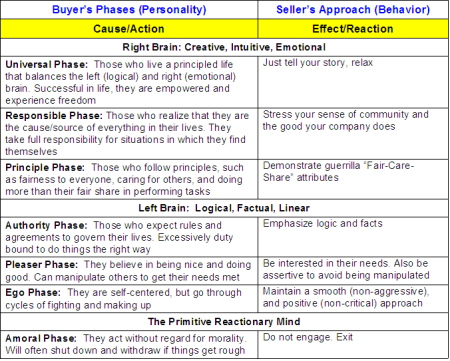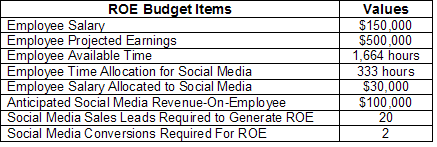Social Media, having its licks at the traditional press release, may be doing more harm than good.
Two days ago, the PR Snoop spent some time on the PitchEngine website. He went there to see for himself what this Social Media Release (SMR) site offers that might provide a viable alternative to the good ole press release. PitchEngine’s founder states that “The traditional press release is dead. At least, to us it is.” The PR Snoop is also an admitted staunch proponent of the-press-release-is-dead faction in the PR industry. Therefore, he had high hopes that this social-media site had a solution that would finally allow everyone to finally bury the corpus delicti that continues to walk the earth as some sort of walking dead.
With that background, here is what the PR Snoop posted on PitchEngine in real time on that website as his “social media release.” It is tied into his previous guest-blogger post on the MarkeTech website, which you can view here.
“PR Snoop Continues to Snoop
“Revisits Breakfast at BusinessWire Findings
“In my April 13, 2010 blog on MarkeTech’s website (https://marketechcom.wordpress.com/2010/04/13/breakfast-at-business-wire/), I flat out stated that “the press release is really, really dead.” Now I have discovered PitchEngine. I’m in the process of writing my very first SMR (Social Media Release).
“What I see on the screen looks exactly like the form I routinely fill out on BusinessWire and any other press release distribution site. Unfortunately, when I complete this release, there will be no distribution by PitchEngine. I will have to do all the heavy lifting. I’m not even entitled to receive a Google search. WHAT!? Don’t the bots search this site?
“Now I must admit that I can add images, a Twitter Pitch, and something called “News Facts,” but I know that I can do all of that in the good ol’ fashioned press release. I keep asking myself “what’s the big deal about PitchEngine?” They don’t pitch, I do. They don’t distribute. I do. They don’t SEO. I have to. So how have things gotten better with Social Media Releases which this company claims replaces the traditional press release?
“I’m not one to snap to hasty judgments, so as I continue to type into this standard press release form that I’ve seen a thousand times, I’m going to cross my fingers and wait with the proverbial “baited breath” for the social media miracle to happen to this otherwise arcane document.”
After the PR Snoop’s aforesaid experience, the issue is still one of whether the traditional press release is really dead. Have we really slain the beast and laid it to rest once and for all?
Here’s an update to the PR Snoop’s activities. The next day there was a hit on Google and Yahoo! search results, as promised by PitchEngine. He also has a Press Room on PitchEngine (http://www.pitchengine.com/prsnoop-continues-to-snoop/72674/) as promised.
Press Rooms and Pitches
PR Snoop must admit to a certain level of ho-hum about the press rooms. After reviewing a dozen or so, they are rather flat pre-formatted cookie cutters of each other. Most of what is there is routinely seen (usually done better) on corporate website “Press” pages. More to the point, the content on every press room visited was plain ole press releases. Very little social implications, except for links to the usual “SHARE+” Internet locations (a la bookmarking, syndication sites)…again, as routinely found on any half-decent B2B website. There was a comment field appended to each press release on the dozen press room pages the PR Snoop visited, but no evidence that any visitors had posted comments.
When the PR Snoop first arrived at PitchEngine, his mental image of what the name implied was that the site was somehow going to provide its subscribers with new ways to “pitch” journalists and their ilk. Other than a tepid acknowledgement that there’s something called a press room, there’s little discernable that PitchEngine does to either push its subscriber’s messages to targeted journalist audiences, or to pull those much-cherished writers/influencers to the PR Snoop’s press room.
After all, the PR Snoop clearly read that “unlike press release and wire services, Pitchengine: [sic] Helps you broaden your audience beyond the journalist to reach bloggers, investors, consumers and other influencers on the social web.” Granted, the sentence before cautioned me: “Don’t think of PitchEngine as a distribution service.” So, the PR Snoop should have known that all social promotions, distribution activities, and syndications are his own responsibility. Personally, press release distribution provider PR Newswire’s MultiVu has a document page view [example at http://multivu.prnewswire.com/mnr/zambellifireworks/44704], with a cleaner look and more appealing social-interactive capabilities (albeit, no apparent “press room”). Worth a visit to download a couple of cool fireworks photos!
The PR Snoop Challenge
Also, PitchEngine did indicate that it provides “…a way to package all of your PR assets (like a press kit) in one concise, easy to share package – the social media release (SMR) – that you can edit and make changes to even after it’s been made live.” Here’s the PR Snoop challenge: create a standard press kit that includes the usual documents such as a fact sheet, case study, company backgrounder, and let’s throw in a white paper, all using the limited document-creation tools PitchEngine provides. The challenge stems from that, only by creating the press kit source documents on the PitchEngine site do those documents become editable and changeable.
Let’s extend the challenge to then consolidate (“package”) those document files into a press kit, so that a press pro can capture the entire press kit. Even if one were to discover a way to package an entire press kit on this site, there is no obvious way to download any document from the press room, unless you manually select text then copy/paste it into your text editor, i.e., MSWord. Ironically, there is a specific hypertext to download the subject company’s logo. Good luck!
The Same Hackneyed Press Release
PR Snoop’s position on the press rooms is that they are little more than slightly-social, user-interactive storage space, and corporate clients can get that free, or for a fee, most anywhere these days. PR Snoop is not slamming the press rooms, per se. These “social media” sites perpetuate the same hackneyed press releases that have been around for literally a hundred years. The old press release isn’t dead, nor is it wearing anything more than the emperor’s new clothes in its posing as now new and social.
In conclusion, the PR Snoop is underwhelmed by today’s SMRs (aka SMNRs, SMPRs, blah, blah, blah). His examples of PitchEngine or any other service are not to cast aspersions on what they’re doing. Those examples only point out that the social aspects of today’s press releases are mundane links to social sites…as window dressing to the same stale news/information documents that we all thought were dead. Compelling content is still not there, and these sites provide nothing to address that. The documents displayed on SMR websites are what they always have been – just ordinary press releases. Neither PitchEngine, nor PR Newswire, caused that…but they do have to stop pretending that these core documents do result in better social and editorial pitch outcomes.
The real risk here is that the marketing/PR industry doesn’t evolve the core press release to be more social. If our need to find a viable, sustainable, marketable and user-compelling press release alternative is to accept what we currently have, then all we’re really doing is continuing to claim that we’ve killed the old press-release beast, without an exit strategy.
# # #
Other Related Blogs
Breakfast at Business Wire












 “Auntie Joan” has arrived at MarkeTech to give your B2B wireless/telecom company some straight-shooting and practical answers to business development questions.
“Auntie Joan” has arrived at MarkeTech to give your B2B wireless/telecom company some straight-shooting and practical answers to business development questions. 















